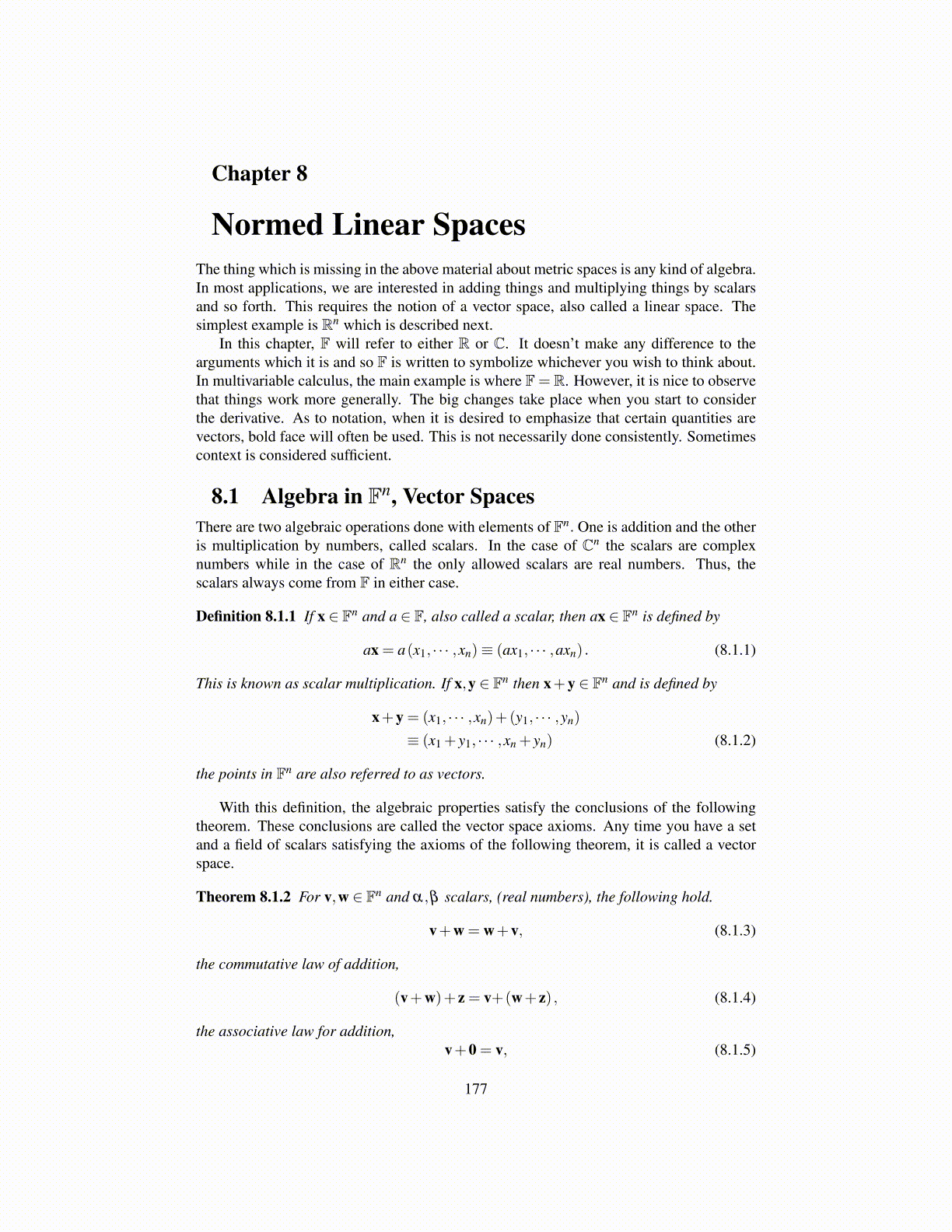
Chapter 8
Normed Linear SpacesThe thing which is missing in the above material about metric spaces is any kind of algebra.In most applications, we are interested in adding things and multiplying things by scalarsand so forth. This requires the notion of a vector space, also called a linear space. Thesimplest example is Rn which is described next.
In this chapter, F will refer to either R or C. It doesn’t make any difference to thearguments which it is and so F is written to symbolize whichever you wish to think about.In multivariable calculus, the main example is where F= R. However, it is nice to observethat things work more generally. The big changes take place when you start to considerthe derivative. As to notation, when it is desired to emphasize that certain quantities arevectors, bold face will often be used. This is not necessarily done consistently. Sometimescontext is considered sufficient.
8.1 Algebra in Fn, Vector SpacesThere are two algebraic operations done with elements of Fn. One is addition and the otheris multiplication by numbers, called scalars. In the case of Cn the scalars are complexnumbers while in the case of Rn the only allowed scalars are real numbers. Thus, thescalars always come from F in either case.
Definition 8.1.1 If x ∈ Fn and a ∈ F, also called a scalar, then ax ∈ Fn is defined by
ax = a(x1, · · · ,xn)≡ (ax1, · · · ,axn) . (8.1.1)
This is known as scalar multiplication. If x,y ∈ Fn then x+y ∈ Fn and is defined by
x+y = (x1, · · · ,xn)+(y1, · · · ,yn)
≡ (x1 + y1, · · · ,xn + yn) (8.1.2)
the points in Fn are also referred to as vectors.
With this definition, the algebraic properties satisfy the conclusions of the followingtheorem. These conclusions are called the vector space axioms. Any time you have a setand a field of scalars satisfying the axioms of the following theorem, it is called a vectorspace.
Theorem 8.1.2 For v,w ∈ Fn and α,β scalars, (real numbers), the following hold.
v+w = w+v, (8.1.3)
the commutative law of addition,
(v+w)+ z = v+(w+ z) , (8.1.4)
the associative law for addition,v+0 = v, (8.1.5)
177